'Science on display': Inside Ohio State's new Pelotonia Research Center in Carmenton
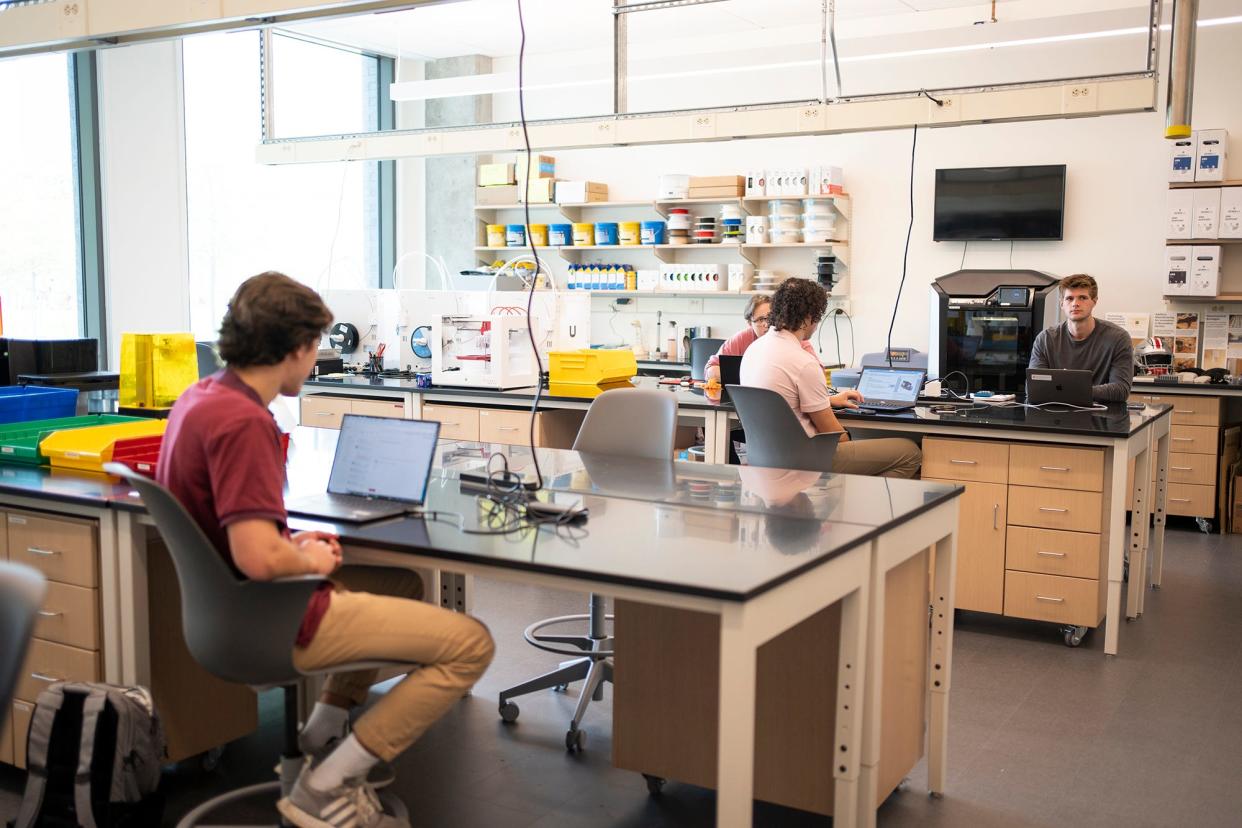
Ohio State University students aren't the only ones moving in this month.
Researchers have started setting up shop in the Pelotonia Research Center, a $227.8 million, 305,000-square-foot interdisciplinary laboratory building that officially opened in May in Carmenton, Ohio State's burgeonin West Campus research district.
At full occupancy, the building, located at 2255 Kenny Road, will be home to 150 principal researchers and more than 1,000 scientists, faculty members, students and other research staff.
The space is named in recognition of Pelotonia’s collaboration with Ohio State. About 6,500 cyclists will cruise into downtown Columbus this weekend for Pelotonia Ride Weekend, all with the goal of raising money for cancer research at Ohio State. Since 2008, Pelotonia participants have raised more than $260 million.
Peter Mohler, Ohio State's interim executive vice president for research, innovation and knowledge, told The Dispatch on a tour in July that the facility isn't just state of the art — it's taking an innovative approach to research.
The Pelotonia Research Center's goals are access, growth and solutions, Mohler said.
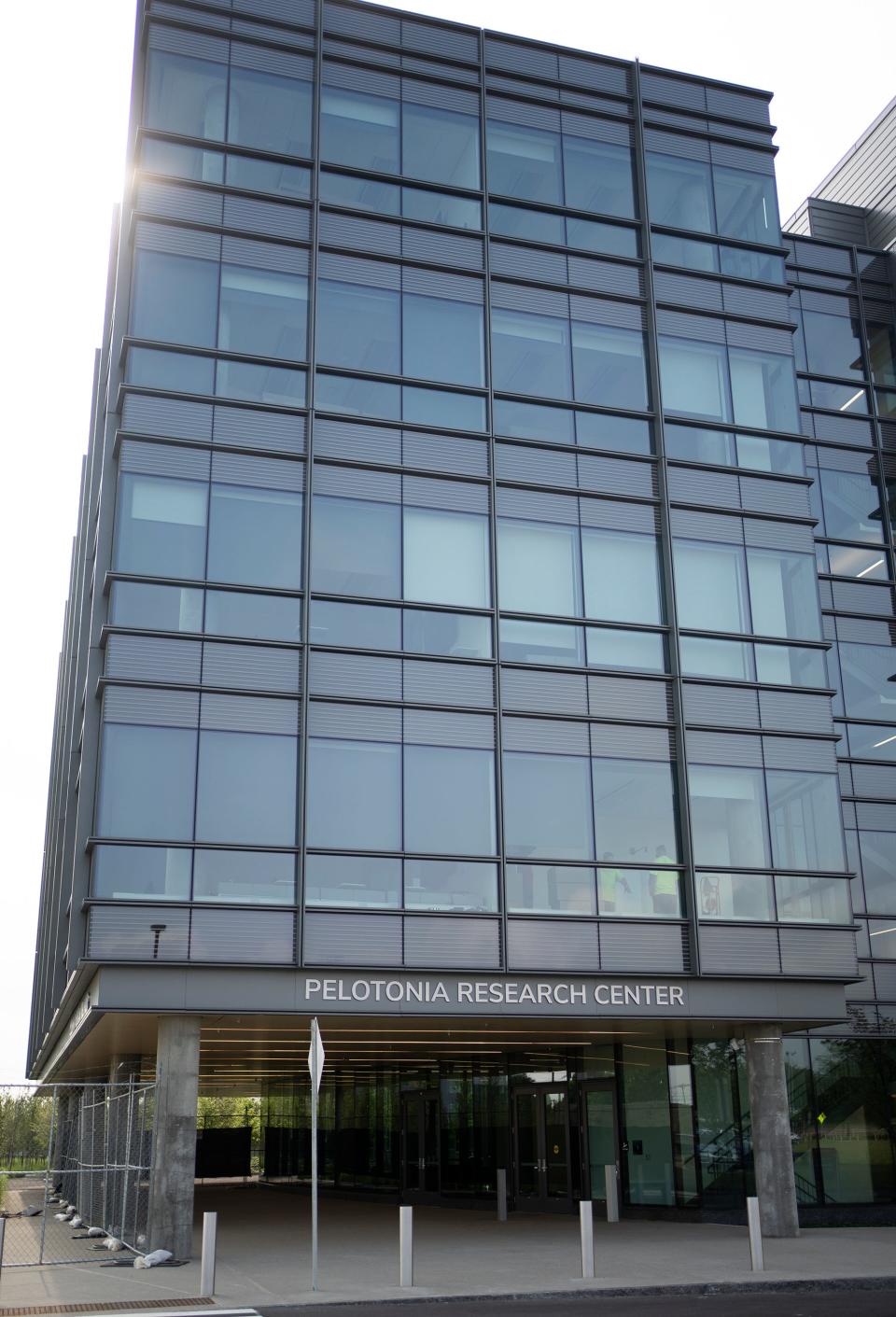
The lab's physical structure helps with that.
One thing that stands out is how many windows are in the space, Mohler said, a far cry from the stereotypical, closed-off basement labs that often come to mind. The windows not only let natural light stream in. They also give visitors a chance to see research happening in person.
"It's difficult to see science in the United States," Mohler said. "We want everyone to experience and understand what it's like to be a scientist."
Each floor has at least one lab with windows that face out into an outdoor plaza, which is slated to open later this fall. Those windows, Mohler said, are a way for people to see "science on display" and expose kids to science in new ways.
"Kids don't know about gene therapy or semiconductors in third grade," he said. "But this is one way to get kids interested in STEM early."
That access will hopefully lead future scientists into STEM fields and keep more homegrown talent in Ohio, Mohler said.
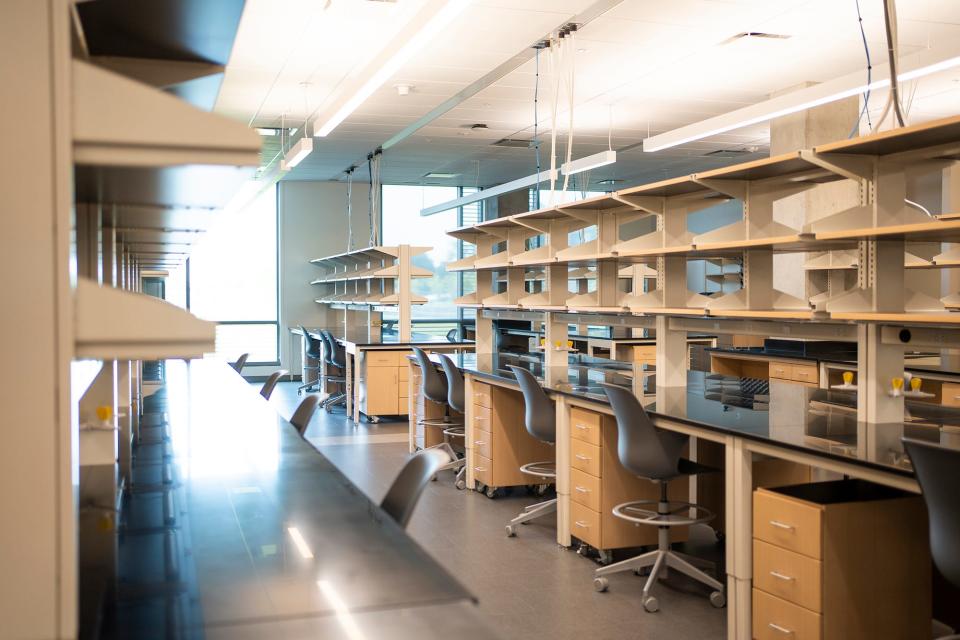
The Pelotonia Research Center is also structured differently than most laboratories.
Each lab is assigned to a research "neighborhood," which focuses on specific issues and concepts like food security, gene therapy, and women's health. The eight neighborhoods are designed to be interdisciplinary, so researchers from different backgrounds and fields can work together to solve problems, Mohler said.
"Our labs are based in need rather than a 'this is how we've always done it' mindset," he said.
Take the Sarah Ross Soter Women’s Health Research Program, for instance, which is studying new therapies to prevent and treat diseases that disproportionately affect women. That lab is right next door to a cardiovascular and pulmonary medicine lab, which is not by accident, Mohler said.
"Unfortunately, there is a lot of overlap between these diseases," he said. "It's not just random. It's all about alignment."
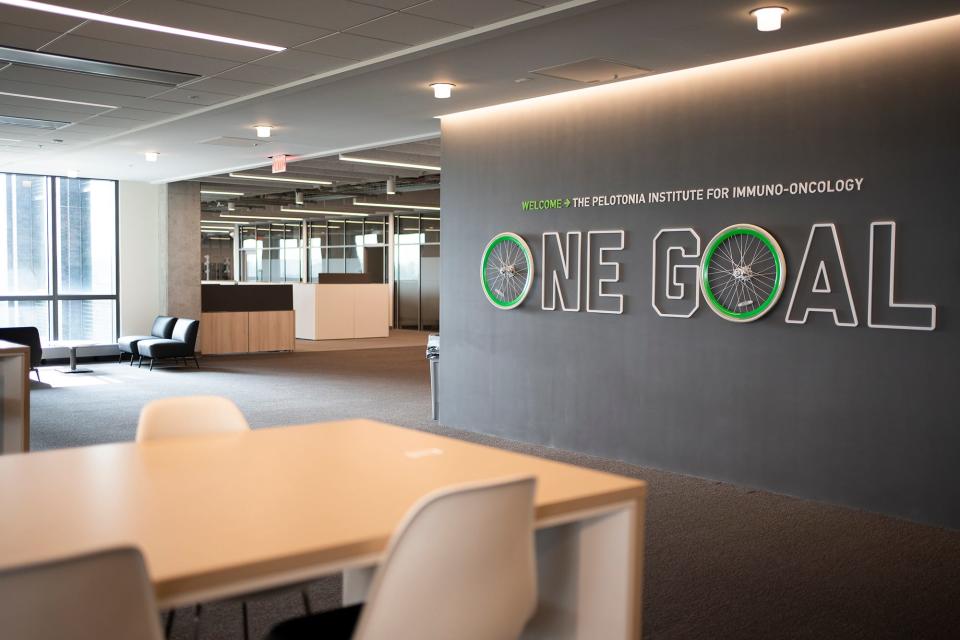
Carmenton will continue to grow throughout the academic year as more projects wrap up. The Energy Advancement and Innovation Center, a community hub located just across the plaza from the Pelotonia Research Center, is expected to open in October.
But other buildings have already opened, like the James Outpatient Care center, which opened earlier this year and is Greater Columbus' first proton therapy center.
From the Pelotonia Research Center's south-facing windows, you can see the new facility. Mohler said he appreciates the proximity.
"Sometimes, when you're in it, you forget why you're doing science in the first place," he said. "Seeing our research in practice gives us a true north star."
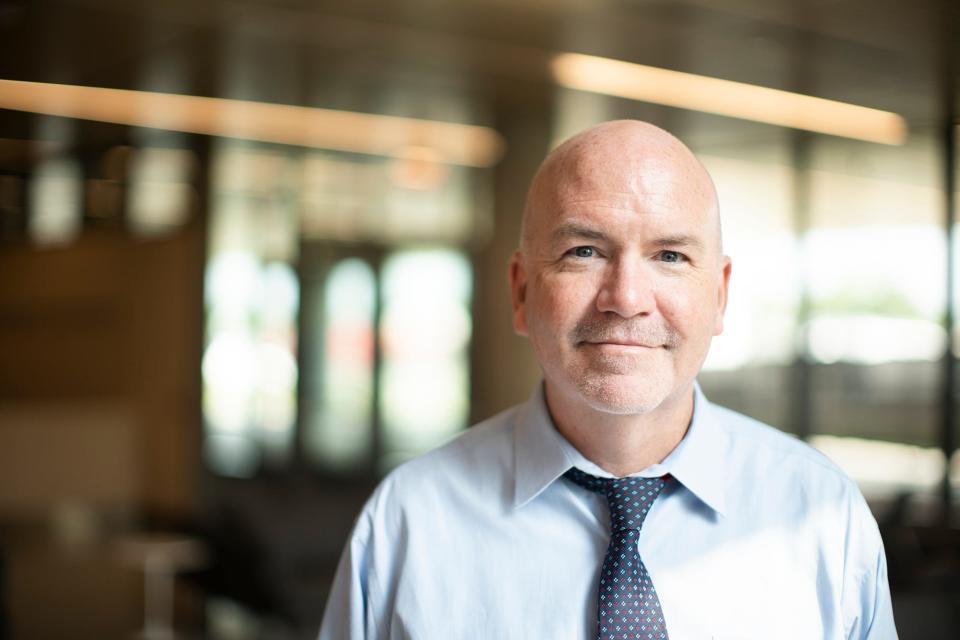
Sheridan Hendrix is a higher education reporter for The Columbus Dispatch. Sign up for Extra Credit, her education newsletter, here.
shendrix@dispatch.com
@sheridan120
This article originally appeared on The Columbus Dispatch: Ohio State's Pelotonia Research Center features 'science on display'

